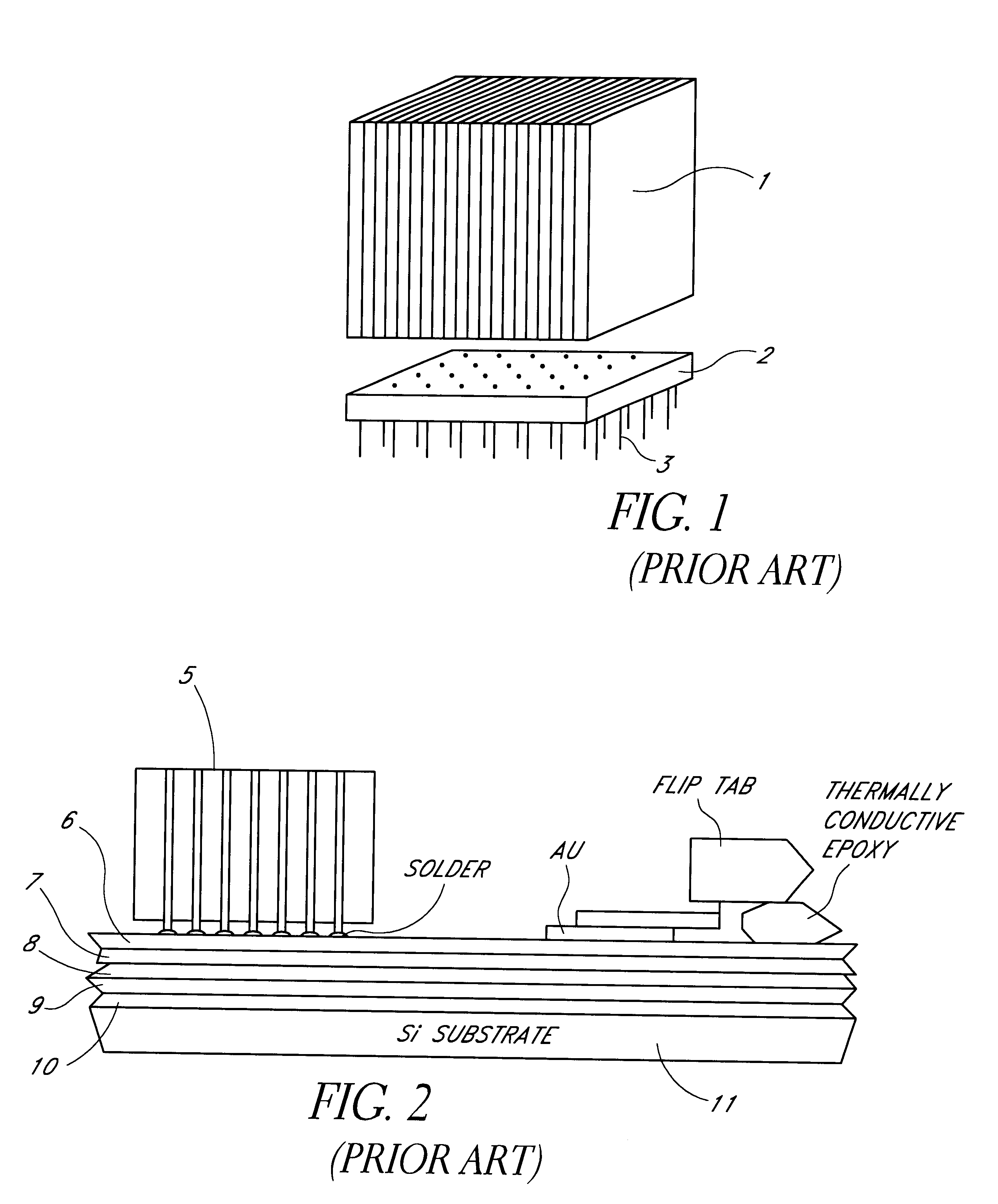Method of transferring ultra-thin substrates and application of the method to the manufacture of a multi-layered thin film device
a technology of multi-layer thin film and transfer method, which is applied in the direction of semiconductor devices, semiconductor/solid-state device details, electrical apparatus, etc., can solve the problems of affecting the thermal properties of the cube, the bulky structure of the cube, and the bulkyness of the cube, so as to achieve the effect of high density
- Summary
- Abstract
- Description
- Claims
- Application Information
AI Technical Summary
Benefits of technology
Problems solved by technology
Method used
Image
Examples
first embodiment
In the above description of the first embodiment the adhesive polymer layer 7 was applied to the second substrate 6 in step S3 however the present invention also includes applying the adhesive layer 7 (e.g. by spin-coating) to the surface of die 4 which has been exposed by thinning. The transfer of the die 4 to the second substrate 6 may then be carried out in accordance with steps S4 to S9 above. Note, however, that the application of the adhesive as described for step S3 is preferred as it planarises the surface of substrate 6. The planarisation of the thinned surface of the die 4 is normally achieved adequately during the thinning process of substrate 1 and therefore a further planarisation is not necessary. If necessary a polishing step may be applied after thinning substrate 1 in order to improve the planarisation of the surface of the die 4.
In accordance with a second embodiment a plurality of devices 22 are formed in a wafer 21 as shown schematically in FIG. 5A. Devices 22 ma...
third embodiment
the present invention will be described with reference to FIGS. 6A to I which is particularly useful for the production of three dimensional memory units. The starting material is a substrate 1, e.g. a semiconductor substrate, onto which is formed or deposited a layer 2 including active or passive devices (FIG. 6A), e.g. memory cells. A metallisation layer may be applied to the surface of the layer 2 of active and / or passive devices and may include one or more bonding pads 81. Substrate 1 is attached to a carrier 5 by a release layer, e.g. solvent removable photoresist, as described above (FIG. 6B). Substrate 1 is then thinned by conventional techniques, such as chemical or mechanical grinding and / or polishing, to form an ultra-thin substrate 101 which may have a thickness of about 5 to 25 micron (FIG. 6C). A second substrate 82, e.g. a semiconductor substrate, is prepared with a layer 83 of active or passive devices (FIG. 6D). An optional metallisation layer with one or more bondin...
fourth embodiment
the present invention will be described with reference to FIGS. 7A to I. The starting material is a substrate 1 with a layer 2 deposited or formed thereon or therein which may include active or passive devices. The layer 2 may also include a metallisation layer including one or more bonding pads 81. A trench 91 is then formed, e.g. by etching, ion milling or similar through device layer 2 into substrate 1 (FIG. 7A). A layer 107 of insulating material, e.g. a BCB layer is then deposited over the complete surface of the device layer 2 filling the trench 91 (FIG. 7B). The insulating layer 107 is then patterned by conventional techniques to form a via hole above the bonding pad 81. A metallisation layer is then deposited and patterned to form a metallisation strip 92 (FIG. 7C). The strip 92 extends so that it overlaps the trench 91. The top surface of insulating layer 107 is then adhered to a carrier 5 by a release layer 3 such as a solvent release layer, e.g. photoresist (FIG. 7D). Sub...
PUM
 Login to View More
Login to View More Abstract
Description
Claims
Application Information
 Login to View More
Login to View More - R&D
- Intellectual Property
- Life Sciences
- Materials
- Tech Scout
- Unparalleled Data Quality
- Higher Quality Content
- 60% Fewer Hallucinations
Browse by: Latest US Patents, China's latest patents, Technical Efficacy Thesaurus, Application Domain, Technology Topic, Popular Technical Reports.
© 2025 PatSnap. All rights reserved.Legal|Privacy policy|Modern Slavery Act Transparency Statement|Sitemap|About US| Contact US: help@patsnap.com



